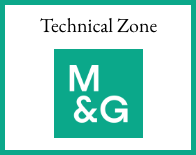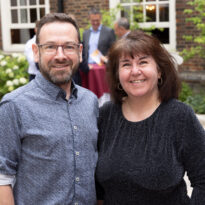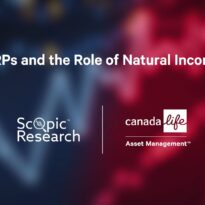On the 10-year anniversary of the Waverton Multi-Asset Income Fund, Co-Head of Multi-Asset James Mee looks back on the past decade and the development of multi-asset investing in that time.
In March 2014, Chancellor George Osbourne changed the rules: “people aged 55 and over would have more flexibility about when and how to draw their DC pension savings, and no-one would have to buy an annuity” (Pensions: annuities – House of Commons Library). So, in October of that year we launched a strategy giving retirees the option of investing and, hopefully, growing their capital while receiving a reasonable income in the meantime. The Multi-Asset Income Fund was born, and in fairly short order gained traction amongst a much broader investor base than initially anticipated.
From the outset, we sought to do things differently to the typical income fund. We chose not to target a yield, and specifically avoided income maximisation; we didn’t smooth dividend payments and we gave ourselves the flexibility to invest for capital growth as well as income. Specifically, we outlined three key objectives which came to define how we ran (and run) the Fund: (1) grow the real value of capital invested; (2) focus on consistency and sustainability of income (not maximisation); and (3) protect capital in periods of market stress. Balancing this trio has underpinned the portfolio’s construction and is the foundation on which the Fund’s performance has been built.
In the ten years since inception, we have seen Brexit, three US Presidents and six British Prime Ministers; brief bouts of deflation and a 20-year-high in inflation; two rate-hiking cycles, oil at $127 and – for a brief moment – minus $37; anaemic, double-digit and “Goldilocks” GDP growth; globalisation in all its glory and its limits tested to the full in the first global pandemic in 100 years; the beginnings of a US/China trade war, Russia’s invasion of Ukraine, a cryptocurrency boom and bust, and war in the Middle East.
The market backdrop has been similarly frenetic. The ten-year gilt yield has been as low as 0.08% and as high as 4.75% – and is testing the latter again. The S&P 500 has risen by 270% in total return terms since we launched the fund; the Bloomberg Commodity index fell from 118 in 2014 to 60 in 2020 and reached 138 in 2022 (before falling back to ~100 today); gold has once again proven itself as a store of value and appreciated to $2,740 at the time of writing (from $1,140 in 2014).
So, what have we learned? Too many lessons to write succinctly, is the honest answer, but a few come to mind. We can see in our returns that prices follow free cash flow per share (FCFpS) over time: the portfolio’s equity allocation has seen FCFpS grow by 13% per annum and prices compound at 16% over the same period. We have found that active – but iterative – asset allocation can add value in the short term, and that making big moves is riskier than nudging the portfolio as the data proves or disproves one’s thesis. We have learned that reality is unfathomably complex and that a framework for understanding and analysing the world is critical to avoid the very real risk of “analysis to paralysis”. Further: it is easy to get stuck in a position, so a sell discipline is important; market positioning and investor sentiment are often very useful contrarian signals; and one can find value in growth (perverse as that may sound). Perhaps most importantly, public market are reflexive, so they key question becomes not, “Would this be bad for the company/country/strategy”, but rather: “Is it in the price?” We could go on…
In the first ten years of the Fund’s life, we have actively allocated into and away from risk assets (equity, credit and certain parts of the alternatives market); we have applied hedging to the portfolio in various guises and at various weights, and we have sacrificed short-term income payments (in 2021 in particular) for capital growth and the prospect of higher cash dividends in future, balancing the three objectives in different ways during different periods.
Has it worked? That is for others to decide. We hope that we will be judged by the standards we set at the beginning, against our three key objectives and, ultimately, by the total return we have delivered investors. In investing, it is often not quite as black and white as “the stopwatch doesn’t lie”. But it is close.
The Waverton Multi-Asset Income Fund has achieved a 6.3% annualised return since inception, outperforming a real return objective of UK CPI+2.5% per annum. For comparison purposes, this puts MAIF in the 8th percentile of the peer group over ten years. When we consider how much risk has been taken to achieve this (using either the Sharpe or Sortino ratios), the Fund is in the 2nd percentile over the same time period.
Main image: aron-visuals-BXOXnQ26B7o-unsplash





































